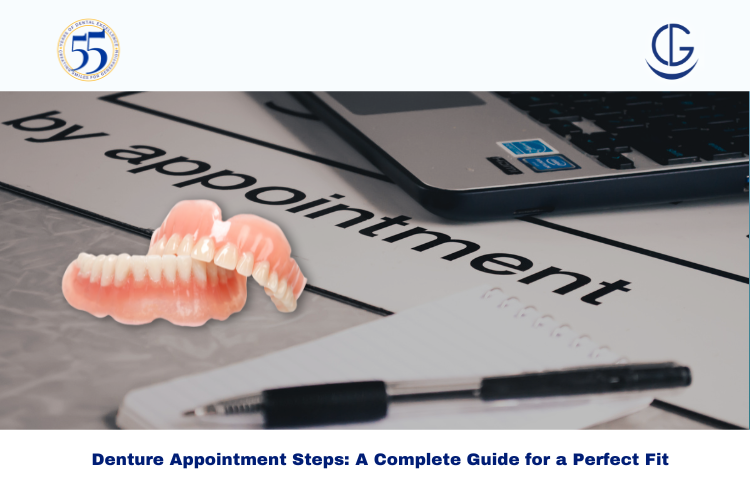Schedule Appointment




If you’ve ever scheduled a denture appointment steps plan or been contemplating one, it’s important to recognise when you might need to see an orthodontist instead (or in addition). At Dr Gowds Dental Hospital in Hyderabad, we encourage both children and adults to undergo early orthodontic assessments.
An orthodontist specialises in diagnosing and treating misaligned teeth and jaws—what we often call common orthodontic problems. Even if you’re thinking more of a straightening solution than dentures, early intervention can save you time, cost, and discomfort later.
Also, if you’ve gone through things like a teeth whitening appointment, faced problems after tooth extraction, experienced gum problems after root canal, or are dealing with dentures bite problems, seeing an orthodontist might be part of the overall solution.
Here are red flags in younger patients that merit an orthodontic check-up:
If a child is losing baby teeth unusually early or very late, the adult teeth may not have enough room, or they may drift out of place. This can trigger common orthodontic problems like crowding or misalignment down the road.
When a child complains that chewing hurts, food gets stuck, or when their bite looks uneven, it may indicate a malocclusion (bite issue). Left unchecked, bite issues escalate and might contribute to dentures bite problems later in life if not addressed.
Extended thumb-sucking influences jaw growth and tooth position, often leading to an open bite or protruding teeth—classic orthodontic conditions that benefit from early referral.
These signs can hint at airway or jaw development issues. An orthodontist can assess whether there’s an underlying skeletal issue impacting your child’s bite or alignment.
When adult teeth come through and you see overlaps, large gaps, or teeth that are rotated, these are the “common orthodontic problems” we refer to. Early correction may simplify treatment later.
Adults sometimes think orthodontics is “too late for me”, but many orthodontic issues can be corrected at any age.
If you notice your front teeth are moving, gaps are appearing, or your bite feels “off”, then orthodontic evaluation is wise. Even if you have had prior treatments or are considering denture appointment steps because of missing teeth, aligning your remaining teeth may improve outcomes.
If your teeth don’t meet properly, you experience jaw clicking, headaches, or muscle pain—these are bite issues. That could also signal initial symptoms of conditions that might lead to denture bite problems if extractions or dentures are in the future.
If you’ve had a teeth whitening appointment recently but still notice your smile doesn’t look “right”, or you’ve had problems after tooth extraction or gum problems after root canal and things don’t feel stable—see an orthodontist. Misalignment or bite shifts after those procedures are more common than you may think.
Uneven wear often means your bite is off. Fixing alignment can protect your teeth, reduce damage, and improve long-term dental health.
If you’re planning denture appointment steps, or have missing teeth, seeing an orthodontist before denture placement helps ensure the bite is stable and your surrounding teeth and jaw are properly aligned. That can prevent future dentures bite problems.
Here are the “common orthodontic problems” you might hear about:
All of these issues can lead to functional problems (chewing, speaking), increased risk of decay or gum disease, and aesthetic concerns. A specialist at Dr Gowds Dental Hospital will assess whether it’s purely orthodontic or mixed with other dental issues.
When you come to an orthodontic evaluation (especially if you’re doing denture appointment steps), here’s what to expect:
By integrating orthodontic evaluation into the denture appointment steps, you ensure that dentures function longer, fit better, and don’t suffer from bite issues due to shifting teeth.
At Dr Gowds Dental Hospital, we emphasise comprehensive care: orthodontic evaluation, bite correction, integration with prosthetics (dentures, implants), and coordination with overall oral health. By addressing alignment early (whether for your child or yourself), you reduce complexity and improve outcomes for procedures like teeth whitening, extracting teeth, root canal work, or denture appointment steps.
Recognising the early warning signs of orthodontic issues—whether in kids or adults—can make a major difference to function, aesthetics, and long-term oral health. From noticing bite problems, shifting teeth, mouth breathing in children, to facing dentures bite problems or integrating orthodontics with denture appointment steps, addressing alignment early is strategic.
If you’re experiencing any of the issues above, don’t wait. Booking a consultation at Dr Gowds Dental Hospital will help you diagnose, plan, and act. With professional guidance, common orthodontic problems can be resolved with fewer complications, stronger outcomes, and better long-term dental health.
Remember: alignment matters. Let an expert help you when signs persist.
They include examination, impressions, fitting, and final adjustments. If your bite feels uneven, an orthodontist should review it before starting.
No, that could signal alignment issues. Schedule an orthodontic check to rule out hidden bite problems.
Yes, nearby teeth may shift into space. An orthodontist can correct movement before it causes bite issues.
Misalignment or bite pressure on the treated tooth can irritate gums. Orthodontic correction helps relieve that stress.
The team coordinates orthodontic and denture care to align your bite first, ensuring dentures fit comfortably and last longer.